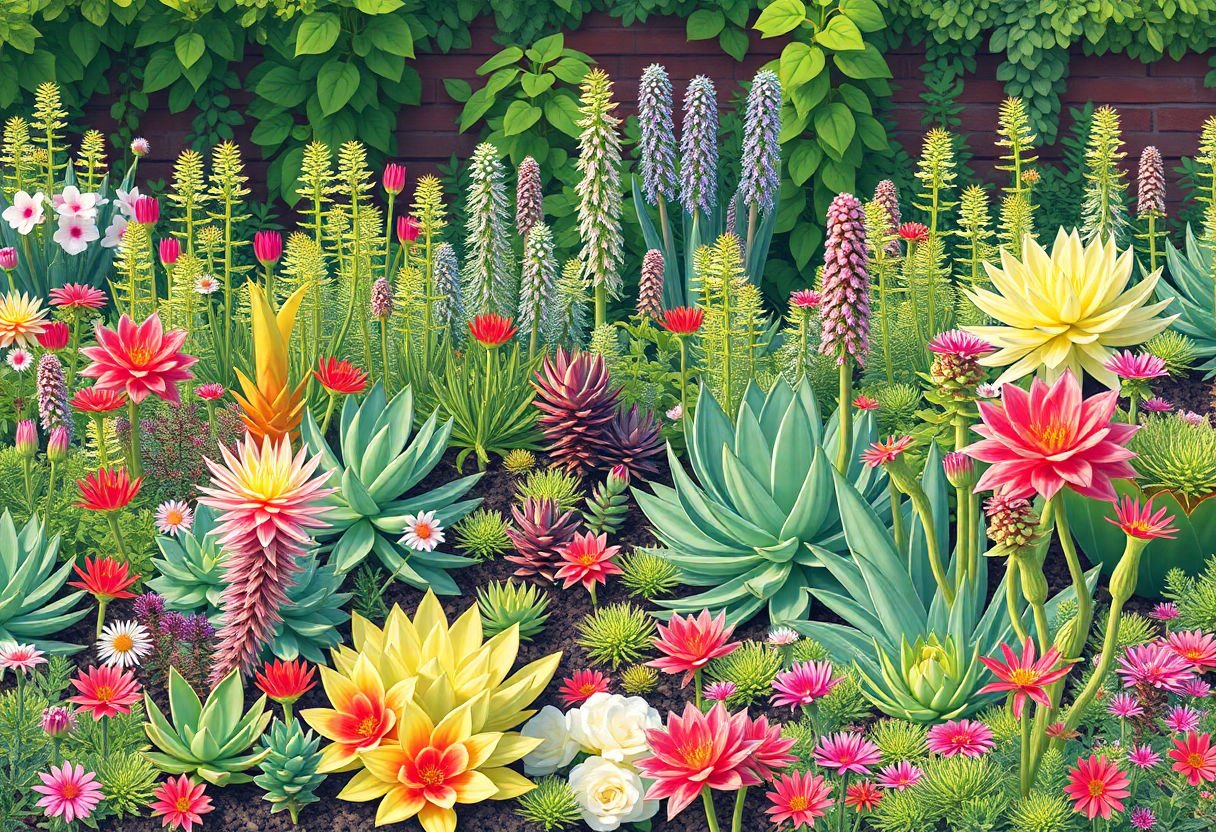Succulent gardens offer a vibrant tapestry of colors and textures, turning any landscape into a dynamic display across all seasons. This guide delves into how seasonal blooming cycles bring a unique charm to these hardy plants, providing year-round allure. By mastering the understanding of succulent flowering patterns, gardeners can enhance their gardens with strategic care and design. From the invigorating blooms of spring to the resilient blossoms of fall, discover how these plants adapt to changing environments. Embrace the allure of succulents as they transform your garden, offering continuous beauty with minimal maintenance.
Key Takeaways
- Different succulents have unique blooming cycles that can enhance your garden year-round with vibrant colors and diverse textures.
- Proper care and maintenance tailored to each season are crucial for promoting healthy growth and flowering of succulents.
- Designing a well-planned succulent garden can ensure continuous beauty and interest throughout all seasons.
- Awareness of common mistakes in succulent care can help avoid hindrances in growth and blooming, ensuring robust and flourishing plants.
Understanding Succulent Blooming Cycles
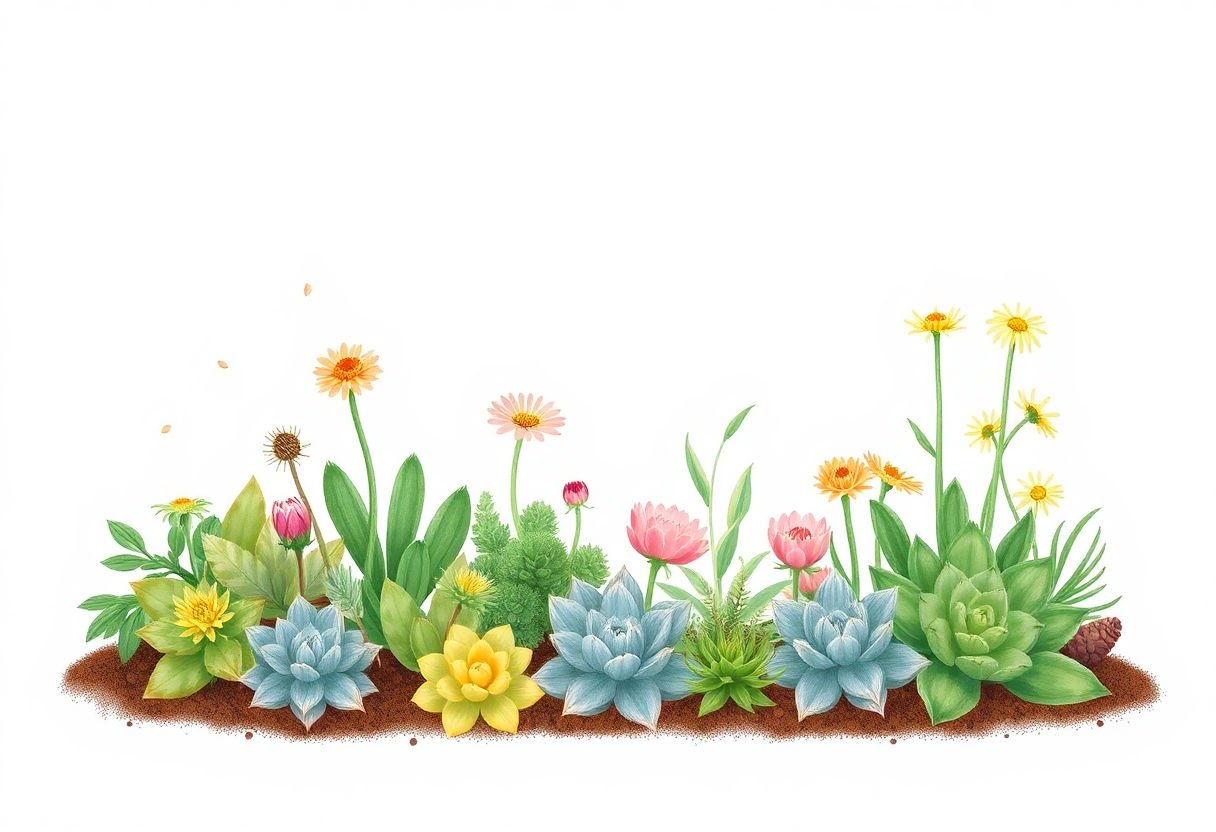
Unlike typical flowering plants, succulents have distinct blooming cycles marked by their unique adaptability to various environments. These cycles are influenced by factors such as light exposure, temperature changes, and watering practices. Understanding these cycles is crucial for gardeners seeking to cultivate a thriving succulent collection.
Most succulents have a specific season when they reach their peak bloom, showcasing vibrant blossoms that enhance any garden’s aesthetic. This blooming often coincides with periods of optimal growth conditions, such as increased daylight in spring or summer. Each species, however, follows its own schedule, which might differ significantly even among similar varieties. For instance, while some succulents bloom in response to longer days and warmer temperatures, others might flower in cooler, shorter days.
Key factors influencing succulent blooming cycles include:
- Photoperiod: Many succulents adapt their blooming based on the length of daylight, with some requiring longer daylight hours to trigger flowering.
- Temperature: Fluctuations in temperature can signal succulents to start their blooming process. Some species require cooler nights to flower.
- Watering: Consistent watering practices aligned with the growing season can support healthier blooms. Over or under-watering can prevent or delay blooming.
Understanding these cycles allows gardeners to provide the appropriate care and conditions needed to encourage flowering, transforming your succulent garden into a year-round display of natural beauty. By aligning care practices with these cycles, gardeners can improve bloom duration and intensity, ensuring that succulents thrive throughout the year.
Spring Blooms: A Fresh Start
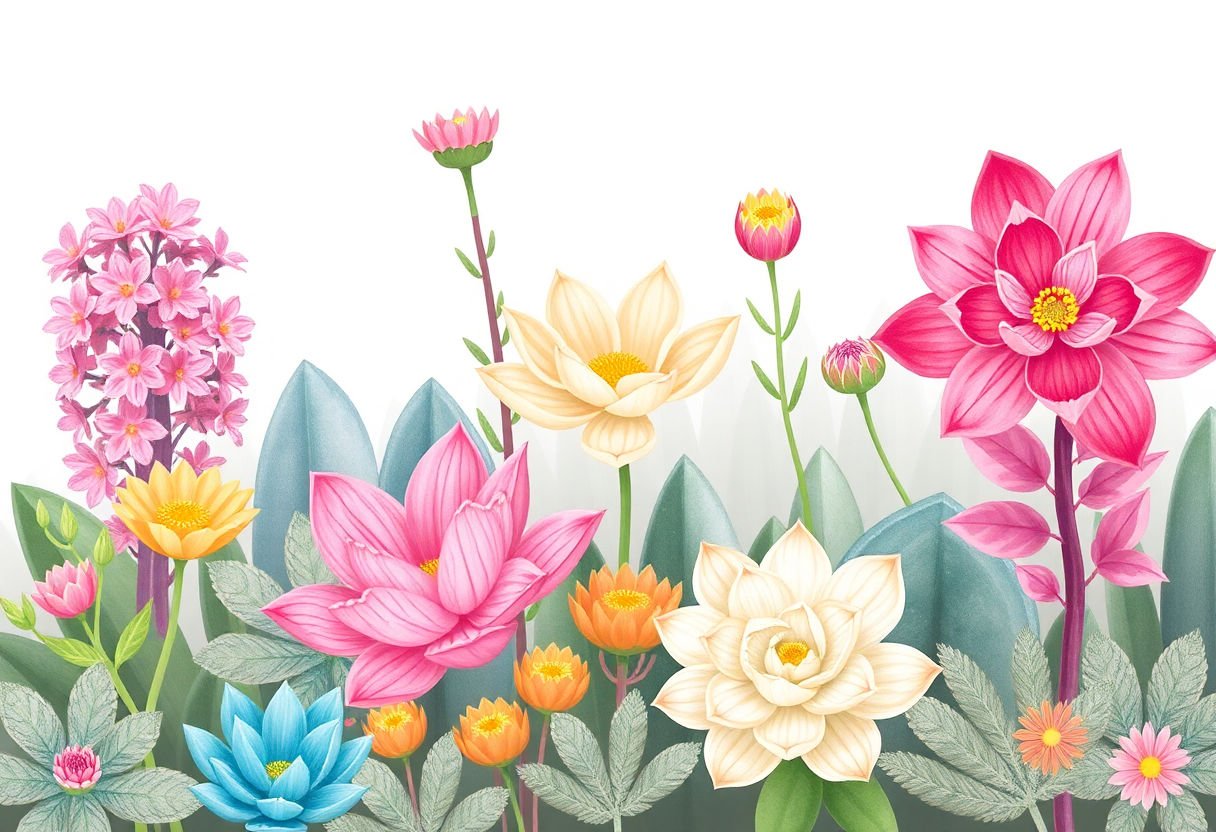
Spring marks an exciting period for succulent enthusiasts. As the earth awakens from winter’s slumber, it brings about a revival of growth and color. Many succulents begin their blooming cycles in spring, introducing dazzling displays of vibrant colors.
Certain species, like the Echeveria, Cotyledon, and Sedum, are renowned for their springtime blooms. The Echeveria’s rosette forms serve as striking backdrops to its blooms, which often sport shades of pink, orange, or red. Cotyledon’s bell-shaped flowers, typically in hues of red and orange, add a unique charm. Meanwhile, Sedum—popular for its versatility—offers tiny, star-shaped flowers that contrast beautifully against its thick, fleshy leaves.
Adaptation to the changing seasons plays a significant role in succulent blooming patterns. In spring, these plants take advantage of the increasing daylight and milder temperatures, triggering their growth and flowering processes. To ensure succulents thrive, it’s essential to replicate their native habitats as closely as possible. Adequate sunlight, proper drainage, and moderate water supply are key during this period.
Tips for optimizing spring blooms:
- Ensure consistent exposure to sunlight: A minimum of six hours of direct sunlight encourages robust flowering.
- Water wisely: Allow soil to dry out between waterings, as overwatering can hinder bloom production.
- Fertilize sparingly: Introduce a balanced, diluted fertilizer in early spring to boost growth.
As noted by horticulturists, “Spring is the ideal season for rejuvenating your garden with succulents, as they showcase some of their most magnificent blooms.” Such elegance and vibrancy from springtime succulents set a promising tone for the growth-filled seasons ahead.
Summer: Vibrant Colors and Full Blooms
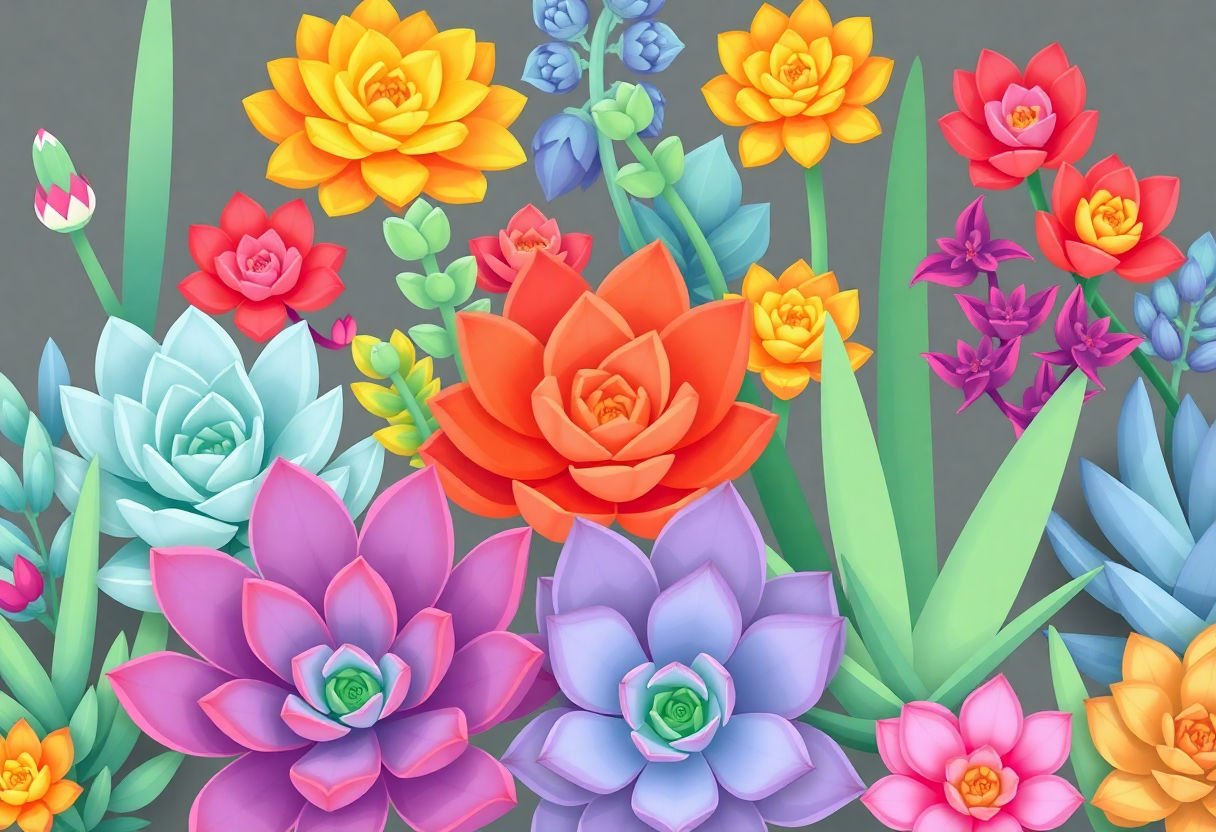
Summer heralds a spectacular transformation in succulent gardens, as these resilient plants unfurl their vibrant colors and lush blooms under the warm sun. The season offers an unparalleled opportunity to experience the full spectrum of succulent beauty.
In the heat of summer, succulents such as Echeveria, Graptopetalum, and Crassula stand out with their dazzling displays. These species reward caretakers with striking hues—ranging from deep burgundy to soft pastel pinks. For instance, Echeveria ‘Afterglow’ is known for its striking lavender-pink leaves that intensify in the sunlight, adding a dramatic flair to any garden setting.
To ensure that these vivid blooms reach their full potential, gardeners must address the specific needs of succulents in high temperatures:
-
Watering: While succulents are drought-tolerant, they benefit from a deep watering routine during summer. It’s essential to allow the soil to dry completely between watering sessions to prevent root rot.
-
Sunlight: Position your succulents to receive adequate sunlight. Aim for a balance, as too much intense light can scorch leaves whereas insufficient light might stunt growth.
-
Soil and Drainage: Utilize well-draining soil, enhanced with organic matter where appropriate, to support robust root systems.
One gardener insights, “The beauty of succulents in summer is unparalleled. With vibrant colors that challenge the summer blooms of any plant, they become the highlight of a garden.”
Through thoughtful care, your succulent garden will not only thrive but also serve as a beautiful focal point during these sun-drenched months.
Managing Fall Blooms for Succulents

The vibrant colors of summer may wane as autumn rolls in, yet many succulents exhibit a unique charm during this transitional period. The cooler temperatures and shorter daytime hours mark a critical shift in the care required to encourage autumnal blooming.
Resilient Succulent Types:
Certain succulents are particularly adept at flourishing in the fall. Among these are:
- Aloe Vera: Known for its medicinal properties, it often produces delicate yellow or orange blooms in the fall.
- Sedum: Typically robust, these succulents can offer vibrant pink to red flowers, adding a splash of color to any garden.
- Haworthia: This plant can surprise with its small white blossoms, typically appearing in the cooler months.
Key Care Practices:
To support these fall blooms, it is crucial to adjust your care techniques:
- Watering Adjustments: With less evaporation, reduce watering frequency to prevent root rot. It’s advisable to water only when the soil is completely dry.
- Sunlight Management: Ensure these succulents receive adequate sunlight, as dim autumn days might necessitate repositioning to brighter spots.
- Temperature Considerations: Protect these plants from sudden temperature drops by moving them indoors or using covers during unexpected frosts.
The interplay of specific succulent varieties and attentive care during the changing seasons can lead to a flourishing display. As the leaves turn outside, your succulents can continue to dazzle, showcasing the beauty of nature’s endurance.
Winter Care and Dormant Blooms
Caring for succulents during winter is crucial to their thriving through the colder months and ensuring they bloom beautifully in the upcoming cycles. As temperatures drop, most succulents enter a period of dormancy, conserving energy and slowing down their metabolic processes. This phase requires distinct care strategies to keep them healthy.
Temperature and Environment: It’s essential to maintain a controlled environment for your succulents during winter. Ideally, keep them in a space between 50-60°F, avoiding exposure to freezing temperatures. If growing succulents indoors, place them near south or east-facing windows to maximize natural sunlight. It’s important to avoid excessive humidity, which can lead to root rot.
Watering Practices: One of the most critical adjustments in winter care is reducing watering frequency. Since succulents use minimal water during dormancy, overwatering is a common mistake. Allow the soil to dry completely between waterings to prevent root damage. A monthly watering schedule is usually sufficient, but always assess the dryness of the soil before adding water.
Nutrient Management: While your succulents rest, they require less nutrition. Hold off on fertilizing until the growing season resumes in spring. Applying fertilizers during dormancy can lead to nutrient burns and disrupt the plant’s natural cycle.
Overall, understanding the specific needs of your succulents during their dormant period will enhance their resilience and blooming potential. By adjusting your care routine to accommodate their winter requirements, you set the stage for vibrant growth and spectacular blooms when the active season returns.
Maximizing Blooming with Best Care Practices
To ensure your succulent garden reaches its fullest blooming potential, it’s essential to adopt the best care practices tailored to the specific needs of these remarkable plants. Succulents, known for their water-storing capabilities, require distinct care to guarantee robust growth and frequent blooming.
Watering Technique: Succulents need deep watering followed by thorough drying of the soil. Overwatering is a common mistake leading to root rot. Ideally, water your succulents when the top inch of soil feels completely dry.
Soil Composition: A well-draining soil mix is critical for succulents. Use a specialized succulent or cactus soil to prevent water retention that could damage delicate roots. Mixing coarse sand or perlite can enhance drainage in regular potting soil.
Light Conditions: Succulents thrive under bright, indirect sunlight. However, be mindful of specific light requirements, as some varieties might prefer shaded areas. Position your succulent garden to receive optimal sunlight exposure without harsh, direct rays.
Nutrient Feeding: During the growing season, spring through fall, succulents benefit from monthly feedings of a balanced, diluted fertilizer. Avoid fertilizing in winter as plants enter a dormant phase.
Repotting Insight: As succulents grow, they may outgrow their containers. Repot them every one to two years to provide adequate space and refresh the soil. Ensure the new pot has sufficient drainage holes.
By adhering to these care practices, your succulents will not only maintain their health but offer a breathtaking display of blooms throughout the year. Each carefully attended aspect of their care contributes significantly to the vitality and flowering success of your garden.
Designing a Year-Round Succulent Garden
Designing a garden that displays the enchanting blooms of succulents across all seasons requires strategic planning and knowledge of each plant’s flowering timelines. To create a dynamic and visually appealing garden, consider incorporating diverse succulents that thrive at different times of the year.
-
Spring Selections: Opt for species like Echeveria and Crassula, known for their striking rosettes and vibrant floral displays. These succulents signal the arrival of spring with their colorful blooms, transforming your garden into a lively tapestry of hues.
-
Summer Stars: Introduce succulents such as Aloe and Agave, which showcase full blooms and maintain vigor under the summer sun. These plants not only add depth to your garden but also tolerate the increased temperatures with ease.
-
Fall Favorites: As the seasons shift, focus on varieties like Sedum and Sempervivum. These resilient succulents exhibit stunning foliage changes, providing continued allure as autumn sets in.
-
Winter Wonders: Winter gardens needn’t be drab. Choose cold-hardy succulents like Jovibarba and certain types of Kalanchoe that can withstand cooler temperatures, ensuring your garden remains lively even in the frostier months.
When designing your garden layout, consider grouping succulents by their seasonal blooms to ensure a continuously changing scene. Additionally, ensure proper spacing for air circulation and sunlight exposure, crucial factors in promoting robust growth and vibrant flowering. An intelligently designed succulent garden not only enhances aesthetic appeal year-round but also fosters an environment where each plant thrives according to its natural rhythm.
Common Mistakes and How to Avoid Them
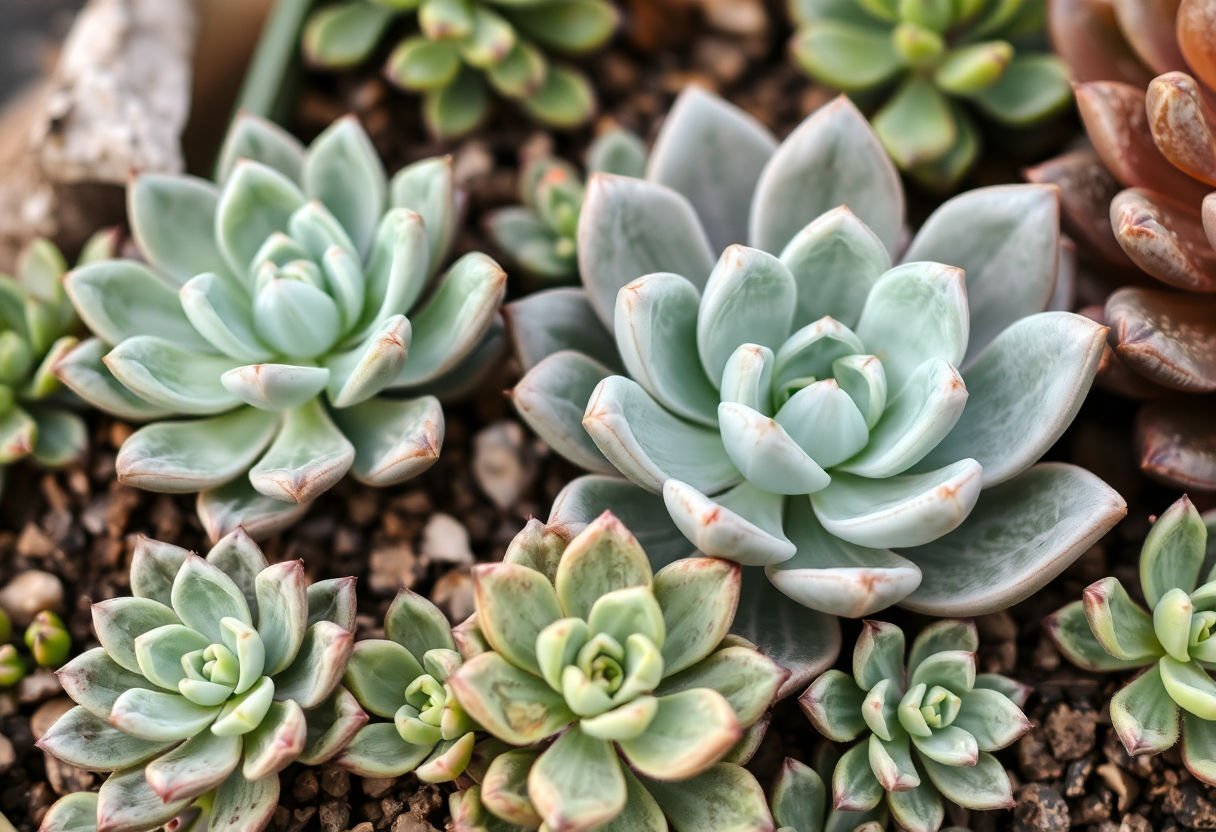
Common mistakes in cultivating a succulent garden can hinder your plants’ potential to thrive and bloom. Overwatering is a frequent error, as succulents embody a resilient nature adapted to arid climates. To prevent this, adopt a routine of watering only when the soil is completely dry.
Another slip-up comes with insufficient lighting. Succulents generally favor bright, indirect light; however, each species has unique requirements. Ensure that your indoor succulents receive enough sunlight by rotating them or using grow lights if necessary.
Using the wrong type of soil can lead to root rot, as well. Improper soil composition can retain too much moisture, disrupting the plants’ delicate balance. Opt for a well-draining cactus or succulent mix, which typically contains sand and perlite to facilitate drainage.
Mistakes with repotting can also affect blooming. Many gardeners repot their succulents too frequently. It is advisable to repot once every couple of years or when the plant outgrows its container to promote rooting and blooming stability.
Overlooking seasonal changes in care is another common pitfall. Succulents experience seasonal shifts, with some going dormant during extreme temperatures. Adjust watering schedules and light exposure according to the season to match their natural growth cycle.
Finally, neglecting to monitor for pests and diseases can compromise your succulents’ health. Regularly inspect your plants for signs of infestations, such as discolored leaves or unusual markings, and address these issues promptly with appropriate treatments. By avoiding these pitfalls, you can maintain a thriving and vibrant succulent garden year-round.
Conclusion
Embracing the unique blooming cycles of succulents offers not only aesthetic beauty but also a dynamic garden design that thrives year-round. By understanding the distinct needs of succulents in each season—spring’s renewal, summer’s vibrancy, fall’s resilience, and winter’s dormancy—gardeners can craft a thriving oasis. This knowledge serves as the foundation for selecting the right species, employing best care practices, and avoiding common mistakes. As you cultivate your successional garden, anticipate a verdant tapestry that evolves with the seasons, offering both visual delight and a rewarding horticultural experience.
Frequently Asked Questions
What factors influence the blooming cycle of succulents?
The blooming cycle of succulents is mainly influenced by environmental conditions such as light, temperature, and water availability. Each succulent species also has its own intrinsic blooming period, which is often adapted to specific seasonal conditions.
How can I encourage my succulents to bloom?
To encourage blooming, provide adequate sunlight, maintain appropriate watering schedules, and ensure nutrient-rich soil. It’s essential to replicate their natural habitat as closely as possible and adjust environmental conditions with season changes.
Are there specific succulents that bloom in each season?
Yes, certain succulents thrive and bloom in different seasons. For example, Echeveria and Graptopetalum often bloom in spring, while Crassula can show vibrant summer blossoms. Sedum might display blooms well into fall.
Do succulents need fertilizers to bloom?
While succulents don’t require fertilizers to survive, providing a balanced, diluted fertilizer during their growth period can enhance blooming. It’s best to use fertilizers designed specifically for succulents and to avoid over-fertilization, which can harm the plant.
Can indoor succulents bloom as well as outdoor ones?
Yes, indoor succulents can bloom if they receive sufficient light and proper care. Ensuring they have access to bright, indirect sunlight and maintaining a consistent watering routine is crucial for inducing blooms within an indoor environment.
